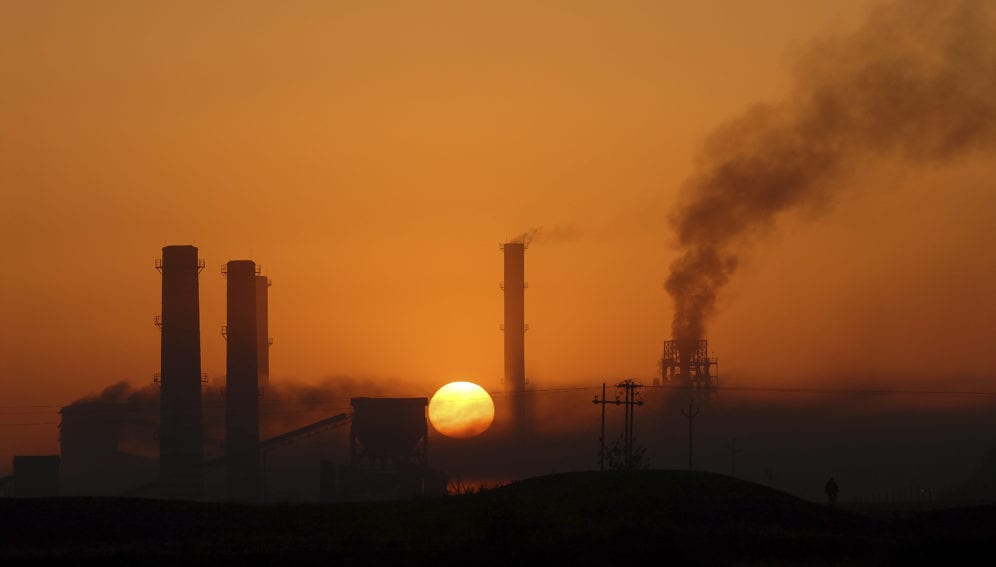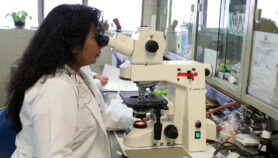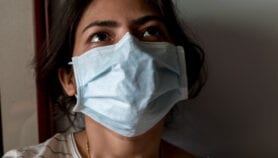Send to a friend
The details you provide on this page will not be used to send unsolicited email, and will not be sold to a 3rd party. See privacy policy.
To combat climate change, reducing carbon emissions is necessary but not sufficient, says Nalaka Gunawardene.
As climate negotiators struggle to reach a new global climate accord this year, the world needs to look beyond curbing carbon dioxide (CO2) emissions.
Doing so can strengthen climate mitigation — efforts to prevent or delay anticipated climate catastrophes — while also delivering quicker benefits in public health, food security and energy savings.
It makes perfect sense for climate mitigation efforts to ‘cover all bases’ by tackling gases or particles other than CO2 — some of which are not as politically contentious.
While CO2 is the single largest contributor to global warming, there is a whole basket of greenhouse gases (GhG). It is now established that human activities have been increasing atmospheric concentrations of many of these.
According to the UN climate panel IPCC’s Fifth Assessment Report, in 2010 about a quarter of all human-made GhG emissions were non-CO2.
The main contributors were methane (16 per cent) and nitrous oxide (six per cent). These came from energy, industrial processes, agriculture and waste sectors. [1]
Not all GhGs warm equally. In fact, the non-CO2 contributors have a higher global warming potential — or how much heat they can trap in the atmosphere. Some linger on in the atmosphere for much shorter periods than CO2.
Fast-action measures
For years, scientists have been urging policy makers to adopt fast-action mitigation strategies to complement CO2 emission regulations.
Ahead of the Copenhagen climate conference in 2009, several leading climate scientists co-authored a paper in which they highlighted short-term, non-CO2 strategies, ‘where existing agreements can be used to accomplish mitigation objectives’.
Its authors included Nobel Laureate Mario Molina, V. Ramanathan of the US-based Scripps Institution and Stephen O. Anderson and K. Madhava Sarma, both of the Montreal Protocol’s International Technology and Economics Assessment Panel. [2]
They defined 'fast-action' to include regulatory measures that can begin within two to three years, be substantially implemented in five to ten years, and produce a climate response within decades. The strategies they proposed included reducing emissions of black carbon particles and precursor gases that lead to ozone formation in the lower atmosphere.
They also urged action on biosequestration, or the capture and storage of the atmospheric CO2 by biological processes, possibly using charcoal.
“These and other fast-action strategies may reduce the risk of abrupt climate change in the next few decades by complementing cuts in CO2 emissions,” they wrote.
Short-lived climate pollutants
The ideas have caught on. Considerable international attention is now being focused on what are collectively called short-lived climate pollutants, or SLCPs.
They are molecules or particles that have a relatively short lifetime in the atmosphere and contribute to warming while they last (from a few days to a few years).
The main SLCPs are black carbon, methane, hydrofluorocarbons (HFCs) and ground level ozone (not to be confused with stratospheric ozone). [3]
In 2012, the Climate and Clean Air Coalition to Reduce Short-Lived Climate Pollutants (CCAC) was formed by several governments – those of Bangladesh, Canada, Ghana, Mexico, Sweden and the US – together with the UN Environment Programme. It aims “to support fast action and make a difference on several fronts at once: public health, food and energy security and climate.” [4]
This approach is known as co-benefits: actions to control climate change, above and beyond helping stabilise climate, can produce other savings or gains.
Many SLCPs are also dangerous air pollutants, causing various adverse impacts on human health, agriculture and ecosystems.
For example, reducing SLCPs in the Himalayan region would benefit hundreds of millions who depend on the Himalayas for their water, food and hydropower. Recognising this, the International Centre for Integrated Mountain Development (ICIMOD), based in Kathmandu, Nepal, studies SLCPs in South Asia and promotes mitigation strategies. [5]
Black carbon
Of particular interest to South Asia is black carbon — tiny soot particles (smaller than 2.5 microns) given off by vehicles, cooking stoves and crop fires when burning diesel, coal, firewood or crop residue. It has a global warming impact 460 to 1,500 times stronger than CO2.
ICIMOD is supporting Nepal and Bhutan to improve ongoing monitoring of air pollutants, especially black carbon. [6]
“While globally black carbon has the second biggest impact on climate after CO2, in northern South Asia its impact is much bigger,” says Arnico Panday, ICIMOD’s senior atmospheric scientist and the coordinator of its Atmosphere Initiative. “Black carbon contributes to the melting of Himalayan glaciers and snowfields, warms the atmosphere at higher elevations and cools it at lower elevations. It also reduces visibility, and contributes to changes in monsoon rainfall patterns.” [7]
Controlling black carbon emissions can be done locally and at a relatively low cost. It involves steps such as regulating brick kilns, adding chimneys to household stoves, changing crop burning practices and reducing forest fires.
However, as air pollution easily crosses borders, success depends on regional coordination. For example, shutting down Nepal’s over 700 brick kilns will not remove the pollution arriving from the tens of thousands of kilns just south of the border, says Panday. [7]
“Beyond responding to emergencies, the entire northern South Asia needs a strong push towards cleaner, less polluting technologies, including clean cooking, clean brick production and clean transportation,” he adds.
Controlling black carbon can quickly reduce air pollution-related illnesses and deaths that are a major public health concern worldwide.
Kunda Dixit, editor of Nepali Times, points out that indoor smoke from cook stoves is a major cause of lung infections, especially among children and the elderly in Nepal.
He says the Nepal government has a target of making all homes indoor smoke-free by 2017. But forest fires and the practice of burning agricultural residue will be harder to control. And even if Nepal reduces it, prevailing winds can still blow up pollution from crop fires in the Indian states of Haryana and Punjab. [8]
Thus the Himalayan region needs regionally coordinated data sharing and responses to air pollution emergencies. Addressing SLCPs provides local, national and regional level opportunities for both action and collaboration.
For sure, South Asian countries must remain engaged in global climate talks looking mainly at CO2 emissions. Meanwhile, much can be done at home for short- and long-term gains on multiple fronts.
As Dixit puts it, “We welcome international efforts to address trans-boundary efforts to mitigate long-term climate change, but what we need are much more urgent efforts closer to home to clean up the air.”
Nalaka Gunawardene is a Colombo-based science writer, blogger and development communication consultant. He has been covering climate change since the late 1980s.
This article has been produced by SciDev.Net's South Asia desk.














